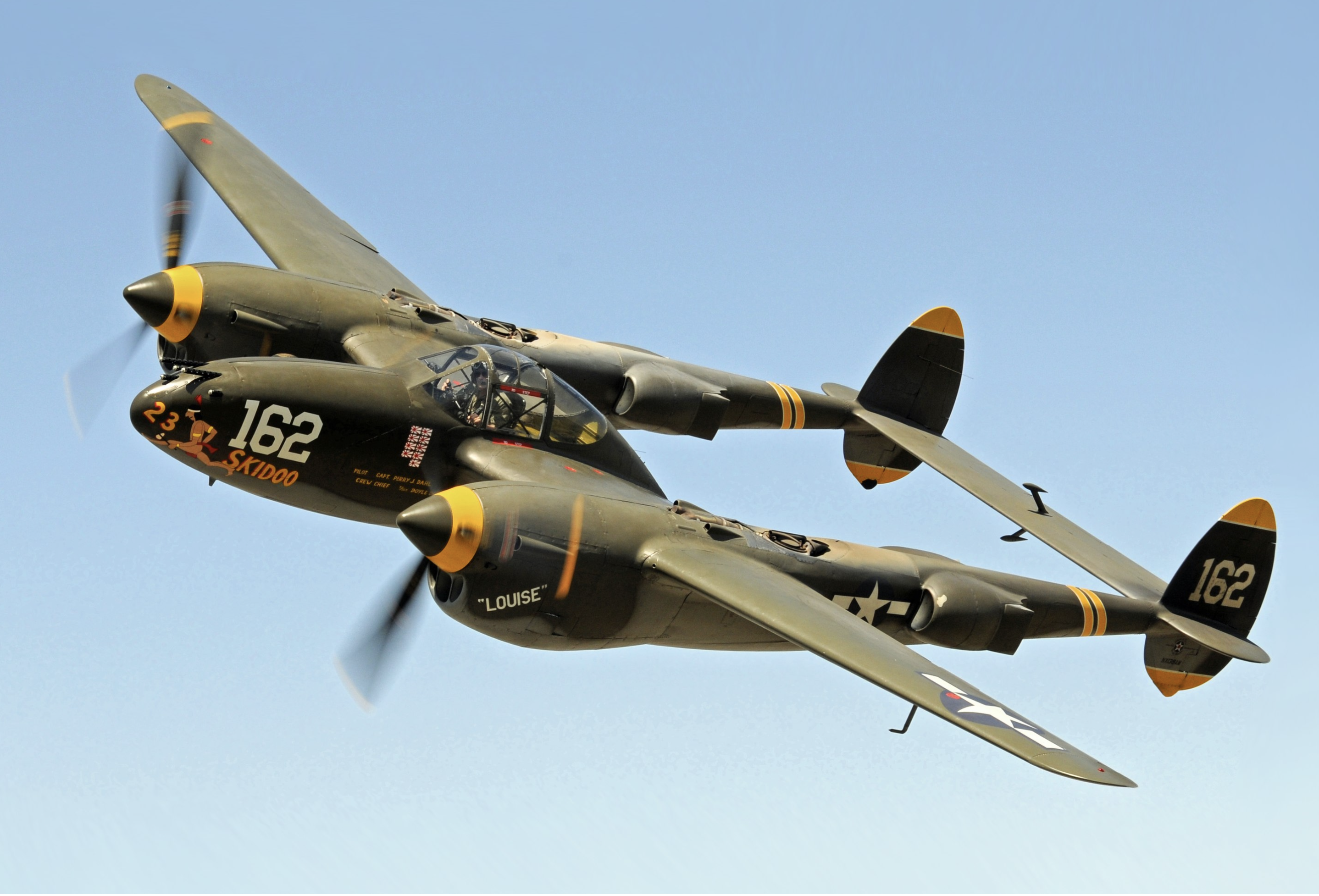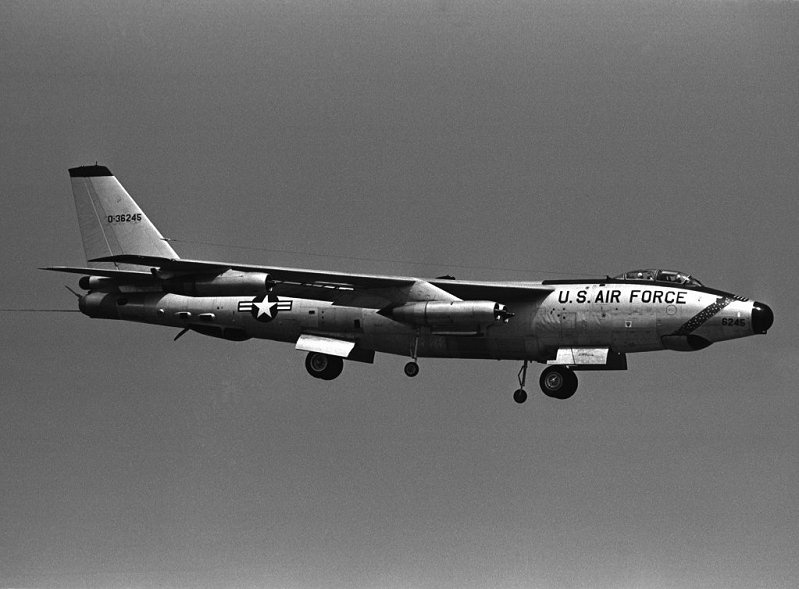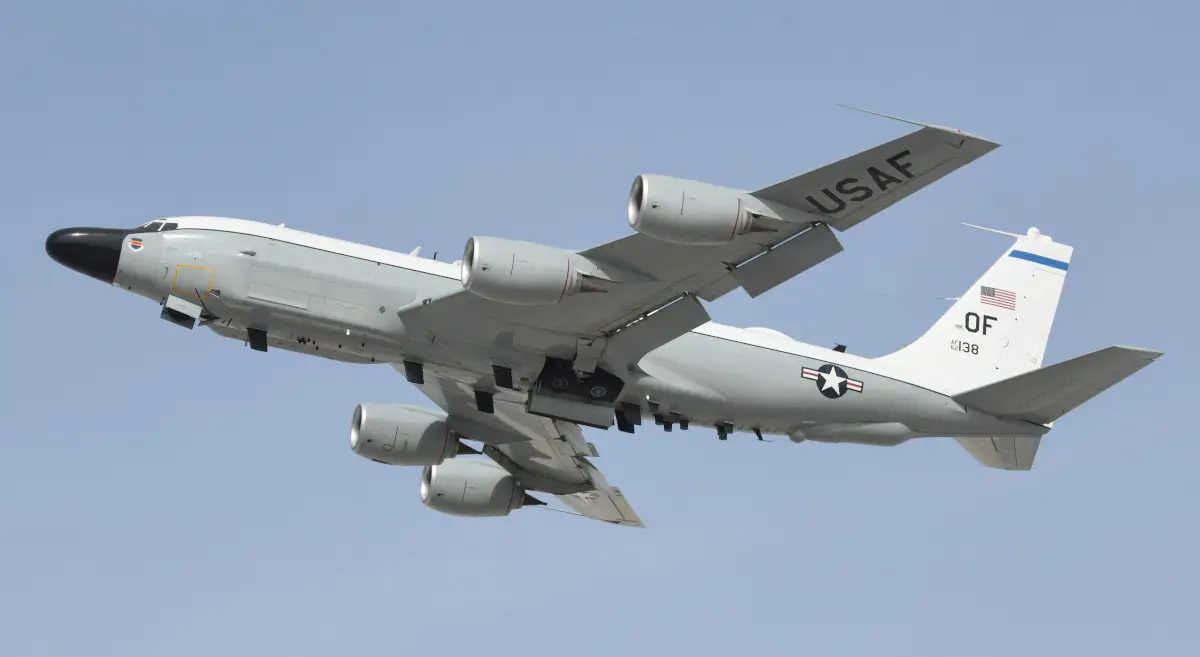55th Pursuit Group – 1940
55th Fighter Group – 1943
55th Reconnaissance Group – 1947
55th Strategic Reconnaissance Group – 1948
55th Strategic Reconnaissance Wing – 1950
55th Wing – 1991
The Fightin’ Fifty-Fifth has made significant contributions to the defense of our great nation for more than 80 years. Having won honor and distinction for its combat record during World War II with two Distinguished Unit Citations, the wing has since compiled an admirable record of achievements. Since its inception, the unit has operated around the world, flying a wide variety of aircraft. The history of the Fightin’ Fifty-Fifth began in January 1941, when the 55th Pursuit Group was activated at Hamilton Field, California. Redesignated the 55th Fighter Group in May 1942, the group departed for England on September 4, 1943. Assigned the mission of escorting 8th Air Force bombers on daylight bombing raids over Europe, the group completed its combat tour of duty with a distinguished record in seven campaigns. The 55th was the first operational P-38 unit in the European theater as well as the first US Army Air Force unit to fly over Berlin. With more than 600 combat missions, the group destroyed over 400 enemy aircraft while damaging more than 100. The 55th, inactivated in August 1946, had 16 aces credited with 90 victories.

Less than a year later, the group reactivated as the 55th Reconnaissance Group at MacDill Field, Florida with assignment to Strategic Air Command (SAC). In June 1948, the 55th transferred operations to Topeka (later named Forbes AFB) Field, Kansas, and became the 55th Strategic Reconnaissance Group. On 1 November 1950, the 55th Strategic Reconnaissance Wing (SRW) activated and was bestowed with the awards and honors of the 55th Reconnaissance Group at Ramey AFB, Puerto Rico. In 1952, the wing returned to Forbes AFB, Kansas and converted to RB-50s. The wing formally assumed a global strategic reconnaissance mission in 1954 and transited to the RB-47E “Stratojet.” Old timers might even remember doing time at Forbes AFB, Shemya or Thule Air Base.

The 55th SRW moved to Offutt AFB, Nebraska, in August 1966. That same year the 55th’s 38th Strategic Reconnaissance Squadron assumed responsibility for SAC’s airborne command and control system. The 2nd Airborne Command and Control Squadron inherited this mission after activation on April 1, 1970. The 1st Airborne Command and Control Squadron, flying E-4A aircraft, transferred to the 55th on November 1, 1975, bringing with it the National Emergency Airborne Command Post, now called the National Airborne Operations Center. On March 1, 1986, the 55th SRW became the host unit at Offutt after the inactivation of the 3902nd Air Base Wing.
In September 1999, the 338th Combat Training Squadron was activated and assigned to the 55th Operations Group. Additionally, in March 2000, the wing received its 16 RIVET JOINT aircraft. The wing conducts operations from Offutt AFB, Nebraska; Kadena AB, Japan; RAF Mildenhall, United Kingdom; Souda Bay Naval Support Activity, Crete and other locations around the world. The 55th Wing is the largest wing in Air Combat Command and the second largest in the Air Force.
The wing deployed to the Persian Gulf on August 8, 1990, and began 24-hour-a-day reconnaissance of the region for Central Command Commander Gen. Norman Schwarzkopf, under Operation DESERT SHIELD. At the start of Operation DESERT STORM, January 18, 1991, the wing continued to provide real-time information to theater commanders and remains there yet today. The 55th Strategic Reconnaissance Wing became the 55th Wing on September 1, 1991, to reflect the wing’s performance of a diversity of missions. When SAC disestablished and Air Combat Command (ACC) established, the wing transferred to ACC and gained its fifth operational location. The 24th Reconnaissance Squadron at Eareckson AFB, Shemya, Alaska, joined the wing with its Cobra Eye and Cobra Ball missions. On April 1, 1993, the 55th Wing took operational control of the 11th Airlift Flight. The 11th ALF flew operational airlift missions in support of the commander of the United States Strategic Command and transported high-ranking military, Department of Defense officials, and members of Congress. This unit has since inactivated and the mission has reverted back to Air Mobility Command. The 2nd ACCS also inactivated in 1994 with its mission transferring to the 7th Airborne Command and Control Squadron. Likewise, the 24 RS inactivated in 1994 and its mission transferred to the newly activated 45th Reconnaissance Squadron. Also in 1994, the 1st ACCS National Emergency Airborne Command Post was renamed the National Airborne Operations Center to reflect the addition of a support role to the Federal Emergency Management Agency. In October 1998, the 55th Wing transferred control of the EC-135 LOOKING GLASS mission to the United States Navy’s TACAMO aircraft and the 7th Airborne Command and Control Squadron, which flew the EC-135 LOOKING GLASS aircraft, inactivated. In September 1999, the 338th Combat Training Squadron was activated and assigned to the 55th Operations Group. Additionally, in March 2000, the wing received its 16 RIVET JOINT aircraft. The wing conducts operations from Offutt AFB, Nebraska; Kadena AB, Japan; RAF Mildenhall, United Kingdom; Souda Bay Naval Support Activity, Crete; and other locations around the world. The 55th Wing is the largest wing in Air Combat Command and the second largest in the Air Force.


